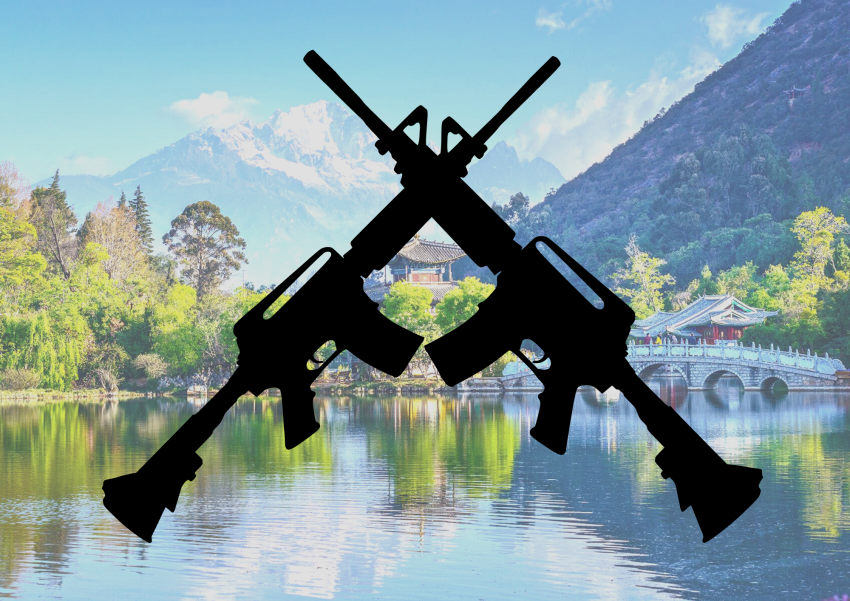
The Shangri-la Dialogue, a regular international gathering attended by prime ministers and defence ministers, recently concluded in Singapore. Organised by the British research institute, the International Institute for Strategic Studies (IISS), it describes itself as a “world-leading authority on global security, political risk and military conflict”.
Of course, the fictional Shangri-la is a far-away land of perfection: the world today is a million miles away from such a wonderland.
IISS’s promotional material claims to “come up with fresh approaches together”. But most of the set-piece speeches offered anything but fresh approaches to security challenges.
The gathering did little to ease tensions in the Asia-Pacific region. It revealed a strengthened hostility by the United States and its allies towards China that only makes the Indo-Pacific more dangerous.
Much was made by US Secretary of Defense Lloyd Austen of maintaining and abiding by the “rules-based order” dominating global politics since the end of World War II. There were the usual commitments to uphold national interests.
Labor defence minister Richard Marles gave a confused speech about the need for a good relationship with China while simultaneously letting it be known that Australia stands with the US in its anti-China campaign.
Marles described China’s military build-up as “the largest and most ambitious we have seen by any country since the end of the Second World War”.
He is not correct. The US military budget of US$750 billion, or 3% of gross domestic product (GDP), significantly outstrips China’s US$237 billion or 1% of GDP.
Marles made no mention of Australia’s record arms build-up. He said if countries see neighbours arming themselves, it will be “inevitable that countries will seek to upgrade their own military capabilities in response” because “insecurity is what drives an arms race”.
There is an arms race and it has been driven by the US since its determined militarisation of the Asia-Pacific with its “Pivot to Asia”.
Marles managed to once more show the US that Australia would remain a loyal member of its “team”, with the Nine-owned Fairfax media enthusing about how Marles had “warned” and “castigated” China over its military build-up.
This is hardly surprising: the media has played a critical role in stirring up anti-China sentiment.
Meetings such as The Dialogue traditionally obscure intent with the language of diplomacy, but Austen cut straight to the chase. He repeated the line that the US and its allies in the Assocation of Southeast Asian Nations and the Quad remain committed to “an open, inclusive, and rules-based regional architecture”.
Austen continued stating, hypocritically, that the US seeks “a region free of aggression and bullying” and “a world that respects territorial integrity and political independence”.
This voice then seamlessly switched to the business of letting the world know which end is up.
“Today,” Austen said, “the Indo-Pacific is our priority theatre of operations. Today, the Indo-Pacific is at the heart of American grand strategy … And today, American statecraft is rooted in this reality: no region will do more to set the trajectory of the 21st century than this one".
China was quick to respond. Addressing the media, Zhang Zhenzhong, Deputy Chief of the Joint Staff Department in the Central Military Commission, described how the US strategy was aimed at “trapping” nations in the region into an ongoing campaign of geopolitical confrontation and that this can only make the region more dangerous.
Zhang also made the point that peaceful coexistence and cooperation between states is in the best interests of all.
While most Dialogue speakers stuck to script, it fell to Japanese PM Fumio Kishida to move into new, if dangerous, territory. Kishida announced his government is going to “fundamentally reinforce Japan’s defence capabilities within the next five years”.
He also made it plain that “realism”, not diplomacy, would prevail. “We will advance the fundamental reinforcement of Japan’s defence capabilities in tandem with reinforcing the Japan-US Alliance and strengthening our security cooperation with other like-minded countries.”
Shangri-la and its imagery is turned, once again, to dust.